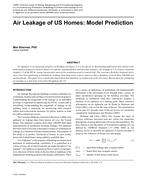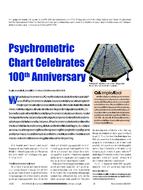Fluid flow in annuli spirally enhanced inner tubes was investigated for the laminar, transitional, and turbulent flow regimes. Three different types of spirally enhanced tubes were investigated – fluted, indented, and ribbed. Flow patterns and transitions between flow regimes were qualitatively investigated through visualisation tests. Detailed temperature profile measurements were also made on the crests and troughs of the tube surface to investigate potential circumferential, axial, and spiral variations. It was found that the fluted inner tubes induced a significant degree of swirl in the flow. Spirally ribbed and spirally indented tubes induced progressively smaller degrees of swirl. Results from these tests were used to propose flow mechanisms. The primary conclusion was that the fluid does not flow exclusively in trough and crest zones near the enhanced-tube wall and in a purely axial flow away from the wall but rather in a spiral pattern, alternately crossing over between the trough and the crest. Transition occurred between RE 310 to 1,000 range. These flow mechanisms indicate the potential for substantial heat transfer enhancement, especially in the laminar and transitional flow regimes.
KEYWORDS: fluid flow, spiral heat exchangers, extended surface heat exchangers, heat exchangers, tubes, turbulent flow, streamline flow, Reynolds numbers, testing, measuring, temperature distribution, surface temperature, experiment, heat flow.
Citation: Symposium, ASHRAE Transactions 1993, Vol.99, pt.1
Product Details
- Published:
- 1993
- Number of Pages:
- 12
- File Size:
- 1 file , 1.4 MB
- Product Code(s):
- D-18266


